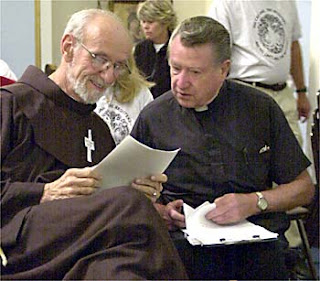US: Iraqis jailing too many innocents
The US Army is now shifting the blame on Iraqis for arresting "too many innocents." Officers complain that it takes a "couple of weeks" to clear up mistakes and release innocent detainees caught up in these "dragnets." Those innocent detainees in Camp Cropper and Camp Bucca who wait eight months for the US to grant them hearings must not be able to laugh at the irony of this assertion.
Lt. Col. Steve Duke, leader of the U.S. military transition team of advisers for the 5th Brigade of the Iraqi army's 6th Division, cited two recent examples of this dynamic at work.
In late March, 2nd Battalion, 3rd Brigade, 10th Iraqi Army Division detained 54 men in Baghdad after an improvised explosive device attack, he said.
"If you were near the IED, or you could spell IED, you were detained," he said.
It took "a couple of weeks" before the Iraqis released any of them, he said.
"The Iraqis are not good at field interviews ... and there's a perception that subordinate commanders do not have the authority to release, but they do have the authority to detain," Duke said.
Authority to release any detainee rests with Iraqi Lt. Gen. Abud Ganbar Hashimi, who heads the Baghdad Operational Command, said Maj. Michael Philipak, a U.S. Army intelligence officer who advises the Iraqi army 6th Division.
The second reason cited by U.S. officers is that the Iraqi defense and interior ministries are drawing up lists of individuals to be detained and sending them down to brigade and even battalion levels of the Iraqi army, all based on "intelligence" that is never shared with either Iraqi commanders or their U.S. counterparts, according to American and Iraqi officers.
Labels: abuse, hearts and minds, iraqi prisons







